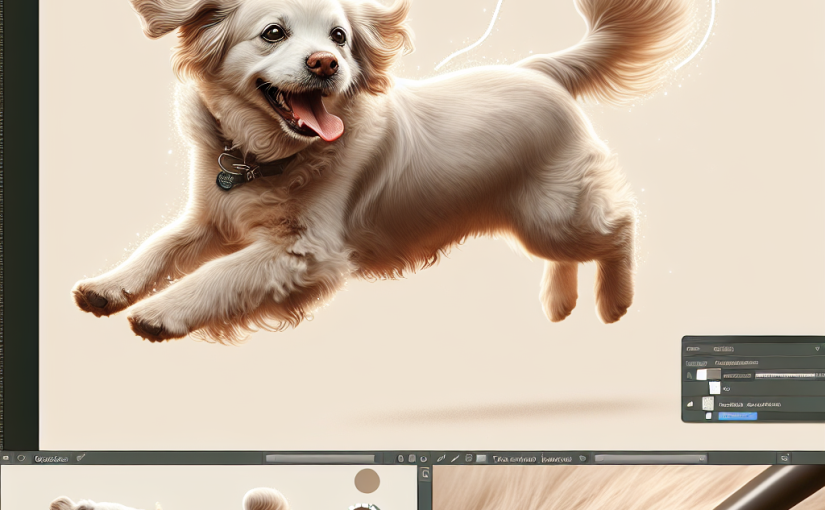Introduction: The Flea Circus on Your Cat

So, you’ve noticed your cat acting a bit like a maniac lately—scratching, biting, and darting around like it’s got ants in its pants. You’re not alone, my friend. Welcome to the world of flea infestations, where your beloved feline hosts a tiny flea circus. I know, it sounds cute, but trust me, it’s anything but. Those little pests are trouble with a capital T. They’re not just annoying; they can cause real issues for your cat. Your mission, if you choose to accept it, is to get rid of fleas off your cat. Sounds simple, right? Well, we’ll see about that.
First things first, let’s chat about what cat flea infestation signs look like. It’s not just about the scratching. Oh no, these critters are sneaky. You might notice your cat grooming more than usual or see little black specks on their bed—flea dirt, as the experts call it. If your cat’s fur looks like it’s snowing black pepper, you’ve got an infestation on your hands, my friend.
Understanding the Flea Life Cycle
Here’s the thing about fleas—they’re like that annoying friend who never leaves the party. To really get rid of them, you need to understand the flea life cycle. Fleas on cats don’t just appear out of nowhere. They’ve got a whole life plan, and they’re sticking to it.
Picture this: a flea jumps onto your cat, and bam, the cycle begins. It lays eggs, and those eggs turn into larvae. The larvae become pupae, and before you know it, more adult fleas. It’s a vicious cycle. Knowing this is half the battle. You’ve got to interrupt the flea life cycle to truly win the war. It’s not just about killing the adult fleas; you’ve got to tackle the eggs and larvae too.
Spotting the Signs of Fleas on Your Feline
Okay, let’s get down to brass tacks. How do you spot fleas on cats? You’re not Sherlock Holmes, but you can still play detective. Start by parting your cat’s fur and taking a good, hard look. It might take a bit of patience, but spotting those little jumpers is key.
Trust me, you’ll know you’ve found a flea when you see one. They’re small, brown, and fast. If your cat’s skin looks red or irritated, that’s another clue. But let’s be real, if you’re spotting fleas, it’s time to act. Don’t just sit there, get moving! The longer you wait, the more these little jerks multiply.
The Dreaded Bath: Is It Really Necessary?
Ah, the dreaded bath. Just the thought of bathing a cat to remove fleas can send shivers down your spine. Is it really necessary, though? Well, it depends. If your cat’s got a serious infestation, a bath might be in order. But let’s not sugarcoat it—cat baths are no walk in the park. You might end up wetter than the cat.
Now, about avoiding cat flea bath drama—try making it a quick, painless affair. Use lukewarm water and a gentle, flea-killing shampoo. Keep the experience as stress-free as possible. Your cat won’t thank you, but at least they won’t hate you either. And hey, you might even dodge a few scratches if you’re lucky.
Combing Away the Pesky Critters
Once you’ve survived the bath—or decided to skip it—you’ll want to try flea combing techniques. This is where the magic happens. You’ll need the best flea comb for cats you can find. A fine-toothed comb that gets right down to business, pulling fleas and their eggs out of your cat’s fur.
Here’s how it goes down: grab your comb and start at the head, working your way towards the tail. Be thorough and patient. Trust me, it’s worth it. Every flea you catch is a victory. Have a bowl of soapy water nearby to dunk the comb in, drowning those pesky critters. It’s a tough job, but someone’s got to do it, right?
So, there you have it. The battle against fleas is one of patience, persistence, and a bit of luck. It’s about rolling up your sleeves and getting down to business. Getting rid of fleas off your cat isn’t a one-and-done deal—it’s a process. But hey, you’ve got this. After all, your cat’s counting on you. Thanks for sticking with me through this flea-ridden ride, and good luck out there!
Finding Fleas: The Hunt Begins
So, picture this: you’re in the living room with your cat, who, at the moment, is doing its best impression of a circus contortionist. You know the drill—every twist and turn revealing nothing but fur and frustration. You’re on the hunt for those pesky little buggers—fleas. How the heck do you check your cat for fleas? Well, it’s not rocket science, but it’s not exactly a walk in the park either.
First, you need to get up close and personal. Part the fur gently—you’re looking for tiny brown specks. Sometimes they look like they’re having a disco party right there in your cat’s fur. You might see flea dirt, which is just a fancy term for flea poop. Lovely, right? If you spot any of these signs, it’s time to get serious.
You’re armed with nothing but a flea comb and a bottle of flea shampoo. Let’s face it, though—your cat probably isn’t gonna be thrilled about this. But you’ve got this. It’s messy, and it’s real, but hey, that’s life. Just like dealing with any other problem—face it head-on.
Bath Time: A Soapy Showdown
Alright, so you’ve found the little critters. Now, it’s time for the showdown—bath time. And let me tell you, choosing the best flea shampoo for cats is no small feat. Some of these shampoos cost an arm and a leg, but you don’t need to break the bank. Pick a decent one that gets the job done. But don’t forget—it’s not just about the shampoo. It’s about the battle of wills between you and your feline friend.
Picture yourself in the bathroom, wrestling with your cat like you’re in a rodeo. Water splashes everywhere, and you’re soaked to the bone. Your cat’s not too happy, but you know it’s for their own good. Lather, rinse, repeat. It’s like a dance—a chaotic, messy dance, but a dance nonetheless.
Flea Combs: Your Secret Weapon
Ah, the flea comb for cats—your secret weapon in this war. Once the bath is over, it’s time to bring out the big guns. The comb is your best friend now. Run it through your cat’s fur, and watch the magic happen. It’s oddly satisfying, isn’t it? Seeing those fleas getting caught up in the comb, knowing you’re one step closer to a flea-free life.
This isn’t just a one-time thing, though. Flea control for cats at home requires diligence. You’ve got to do this regularly. Sometimes it’s a daily ritual, other times it’s weekly. It depends on how bad the infestation is. But persistence pays off. You’ll get there.
Home Sweet Home: Flea-Free Zone
Now, let’s talk home remedies for fleas on cats. You don’t always need the heavy-duty stuff. Sometimes, the best solutions are sitting right under your nose—or in your kitchen, to be precise. Natural flea treatment for cats is all the rage these days. You can try a mix of vinegar and water. Or maybe some essential oils like lavender or eucalyptus. Just a heads up, though—make sure whatever you use is safe for cats. The last thing you want is to swap one problem for another.
Creating a flea-free zone at home is a must. Vacuum like your life depends on it. Wash everything your cat’s been in contact with. And I mean everything—bedding, toys, you name it. It’s a pain, sure, but it’s worth it. Before you know it, your home will be a flea-free paradise, and you’ll wonder why you ever let it get this bad in the first place.
The Vet: When to Call in the Pros
Sometimes, despite your best efforts, those fleas just won’t quit. That’s when you know it’s time to take your cat to the vet for fleas. It’s like calling in reinforcements. You’ve done all you can, but now you need a pro to step in. And there’s no shame in that—sometimes you just need a little help.
The vet will know what to do. They’ve seen it all before. Whether it’s a prescription treatment or something else, they’ll set you on the right path. And once it’s all said and done, you’ll look back and wonder why you waited so long.
So there you have it. A journey through the ups and downs of flea warfare. It’s a ride, isn’t it? But you’ve got this. You’ve faced the challenge, and you’ve come out on top. Thanks for sticking with it—your cat’s probably thanking you too, in their own weird, aloof way. Keep fighting the good fight, and remember, you’re not alone in this. Cheers!
Dealing with Recurring Flea Infestations
We’ve all been there, right? You think you’ve got it under control. You’ve vacuumed, sprayed, prayed, and yet—like a bad penny—those fleas keep coming back. Recurring flea infestations are like that old song you can’t shake from your head. Just when you think it’s done, it starts playing again. Getting rid of fleas off your cat can feel like a never-ending battle. Breaking the cycle requires more than just a quick fix; it needs a game plan.
Picture this: You’ve just cleaned your whole house, and it smells like lemony freshness. You’re feeling pretty good about yourself. But then you spot it—a flea jumps from your cat’s fur like it’s in the Olympics. The problem is, fleas are sneaky. They lay eggs in the carpet, on your pet’s favorite chair, even in the tight corners you forgot existed. To tackle recurring flea infestations, you gotta be proactive. Regular vacuuming, washing your pet’s bedding, and using treatments that target all life stages of the flea can help. It’s like trying to stop a leaky faucet—it’ll take some persistence and patience.
Natural Remedies for Flea Control
If you’re like me, the idea of dousing your home in chemicals makes you cringe. Enter natural flea remedies for cats. I once met a lady who swore by diatomaceous earth. I know, it sounds like something from a sci-fi novel, but it’s just a powder made from fossilized algae. Sprinkle it around your home, and it supposedly dehydrates those pesky critters.
Another favorite? Essential oils. But hold up—before you start marinating your cat in lavender oil, remember that not all oils are safe for pets. A few drops of diluted cedarwood or rosemary oil might do the trick, but always check with your vet first. You can also try a natural flea collar. Make one at home with a bandana and a few drops of safe essential oils. Just tie it around your cat’s neck and voilà—a stylish, flea-fighting accessory. These remedies might not be the magic bullet, but they’re worth a shot.
The Role of Diet in Flea Prevention
Who would’ve thought that what your cat eats could be a secret weapon in the flea-busting saga? Flea prevention through diet isn’t just about keeping your cat healthy—it’s about making them less appealing to fleas. I once knew a guy who swore by adding brewer’s yeast to his cat’s meals. The theory is that it makes your cat’s blood unappetizing to fleas. Whether that’s true or not, brewer’s yeast is loaded with nutrients, so it can’t hurt.
Another tip? Omega-3 fatty acids. These little wonders can improve your cat’s skin and coat, making it harder for fleas to latch on. You can find them in fish oil supplements or certain cat foods. And hey, even if it doesn’t deter fleas, your cat will have a shiny coat to show for it. So, next time you’re at the pet store, consider picking up some dietary additions that might just give those fleas a run for their money.
Creating a Flea-Free Home Environment
Now, let’s talk about your living space. How to make home flea-free is a question that’s plagued many pet owners. Truth is, it’s not just about treating your cat; it’s about treating your home too. I remember visiting a friend’s house and being impressed by how spotless it was. Turns out, she had a routine—vacuuming every other day, washing pet bedding weekly, and using flea traps.
Effective home flea control tips often include the obvious—like vacuuming and laundering—but don’t underestimate the power of a good steam clean. Fleas hate heat, and a steam cleaner can get into those hard-to-reach places. Additionally, consider using flea sprays or powders on carpets and furniture. Just be careful with the chemicals, especially if you have kids or other pets around.
Lastly, keep your yard in check. Trim the grass, remove debris, and you might even consider nematodes—tiny worms that eat flea larvae. Yeah, it sounds gross, but it’s nature doing its thing. Keeping the outside in check can make a huge difference on the inside.
When to Call the Vet
Sometimes, despite your best efforts, those fleas just won’t quit. It’s like the universe is playing a cruel joke. That’s when you need cat flea infestation vet advice. Knowing when to call the vet is crucial. If your cat is scratching more than usual, losing fur, or showing signs of anemia (pale gums, anyone?), it’s time to get professional help.
I’ve seen cat owners try everything under the sun, only to realize their pet needed a vet’s expertise. Vets can provide treatments that aren’t available over-the-counter. They can also offer advice tailored to your cat’s specific needs. And let’s face it—sometimes you just need that peace of mind.
Signs your cat needs a vet for fleas can include behavioral changes, excessive grooming, or even lethargy. Don’t wait until it gets to that point. Pick up the phone and make that appointment. You’ll be glad you did.
In this wild ride of getting rid of fleas off your cat, you’ve learned more than you ever wanted about those tiny pests. But now you’re armed with knowledge and ready to tackle the problem head-on. So go ahead, face those fleas, and give your cat a scratch behind the ears from me. Cheers!
Quick Takeaways:
Alright, let’s dive straight into it. Getting rid of fleas off your cat isn’t just a task; it’s a rite of passage for any cat owner. First, you need to know how to check your cat for fleas. Look for those little brown nuisances—if your cat’s scratching like there’s no tomorrow, that’s a big hint. Use the best flea comb for cats to dig through that fur. Trust me, it’s a game-changer. Bathing your cat to remove fleas? A drama in itself, right? Avoiding cat flea bath drama is all about preparation—towels, treats, and maybe some earplugs for the inevitable yowling.
Now, let’s chat about the flea life cycle in cats—it’s relentless. They breed faster than you can say “infestation,” so breaking their cycle is crucial. Natural flea remedies for cats can help, but sometimes you need the heavy artillery. Speaking of artillery, the best flea shampoo for cats is your best friend. But hey, don’t forget about home remedies for fleas on cats—sometimes, the old ways are the best ways.
Your home’s a battleground too. Effective home flea control tips can save you a lot of grief. Think vacuuming, frequent washing, and maybe even a flea bomb or two. And let’s not forget your cat’s diet. A healthy cat is less appealing to fleas, so tweaking their diet can be part of your master plan. Keep an eye on signs your cat needs a vet for fleas—if things get out of hand, don’t hesitate to call the pros.
FAQs:
1.
How do I know if my cat has a flea infestation?
Start by spotting the signs. Cat flea infestation signs include excessive scratching, biting, and red patches on the skin. Peek under their fur—if you see tiny brown critters or flea dirt, you’ve got company. Learning how to spot fleas on cats is half the battle.
2.
What’s the best way to get rid of fleas off your cat?
Begin with a thorough combing session using the best flea comb for cats you can find. Follow it up with a bath using a specially formulated flea shampoo. It might be a bit tricky, avoiding cat flea bath drama, but patience is key. Finally, treat your home to prevent a comeback.
3.
How does the flea life cycle impact my cat?
Fleas breed at an alarming rate. A single flea can lay dozens of eggs daily, making the flea life cycle cats experience a nightmare if unchecked. Regular cleaning and preventive measures are essential to avoid infestation.
4.
Can my cat’s diet help with flea control?
Absolutely. Flea prevention through diet is a thing. A balanced diet strengthens your cat’s immune system, making them less appealing to fleas. Consult your vet for diet tips that can help in your flea-fighting mission.
5.
When should I take my cat to the vet for fleas?
If home remedies and over-the-counter treatments fail, it might be time for professional help. Signs your cat needs a vet for fleas include relentless scratching, hair loss, or if the infestation seems to spread. Don’t wait too long; your vet can offer targeted treatments that work.
Conclusion:
So, there you have it, folks. Getting rid of fleas off your cat is no small feat, but it’s doable with a bit of grit and know-how. It’s like a dance—sometimes you lead, sometimes you follow, but you’re always moving. Keep an eye on those signs, and don’t shy away from using the tools at your disposal. Flea combing techniques, bathing, and the right diet can make a world of difference.
Remember, your home is part of the equation too. Making it flea-free is as important as treating your cat. If all else fails, your vet’s there to help. But don’t sweat it too much. You’re part of a long line of cat lovers who’ve faced this challenge. You’re not alone—your cat’s counting on you, and you’ve got what it takes. Thanks for sticking with me through this flea-ridden journey. Now go give your feline friend a little extra love. They deserve it, and so do you. Cheers!
References:
1. [WebMD – Remove Fleas from Pet](https://www.webmd.com/pets/remove-fleas-from-pet)
WebMD is a widely recognized and authoritative source for medical and health-related information, including pet care.
2. [PetMD – Get Rid of Fleas on Cats](https://www.petmd.com/cat/general-health/get-rid-of-fleas-on-cats)
PetMD is a trusted resource for veterinary advice and pet health information.
3. [Petsmart – How to Get Rid of Cat Fleas and Keep Them Away](https://www.petsmart.com/learning-center/cat-care/how-to-get-rid-of-cat-fleas-and-keep-them-away/A0130.html)
Petsmart is a leading pet supply retailer that provides informative articles on pet care.
4. [Good Housekeeping – How to Get Rid of Fleas on Cats](https://www.goodhousekeeping.com/life/pets/a27199208/how-to-get-rid-of-fleas-on-cats/)
Good Housekeeping is a reputable publication known for its expert advice on home and pet care.
Our solution eradicates fleas on contact without harmful chemicals, ensuring a safe environment for your pets and family. Easy to use and highly effective, SayByeBugs helps you maintain a flea-free home. Learn more and order today at SayByeBugs.com
Our solution eradicates fleas on contact without harmful chemicals, ensuring a safe environment for your pets and family. Easy to use and highly effective, SayByeBugs helps you maintain a flea-free home. Learn more and order today at SayByeBugs.com


















